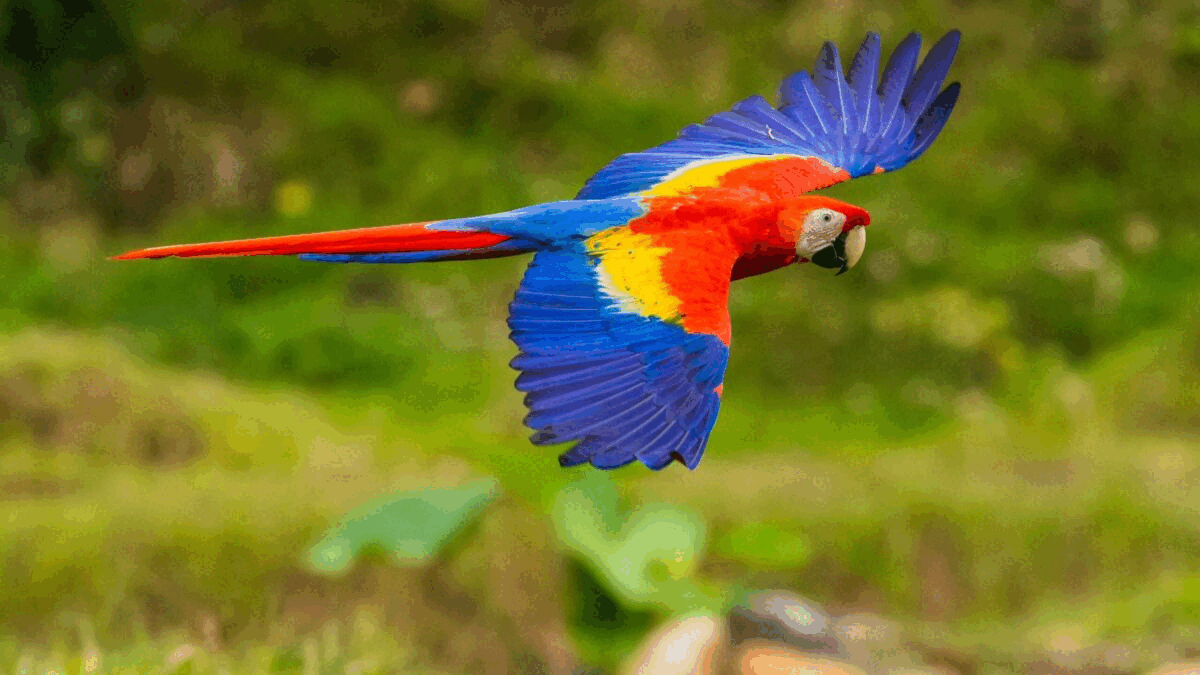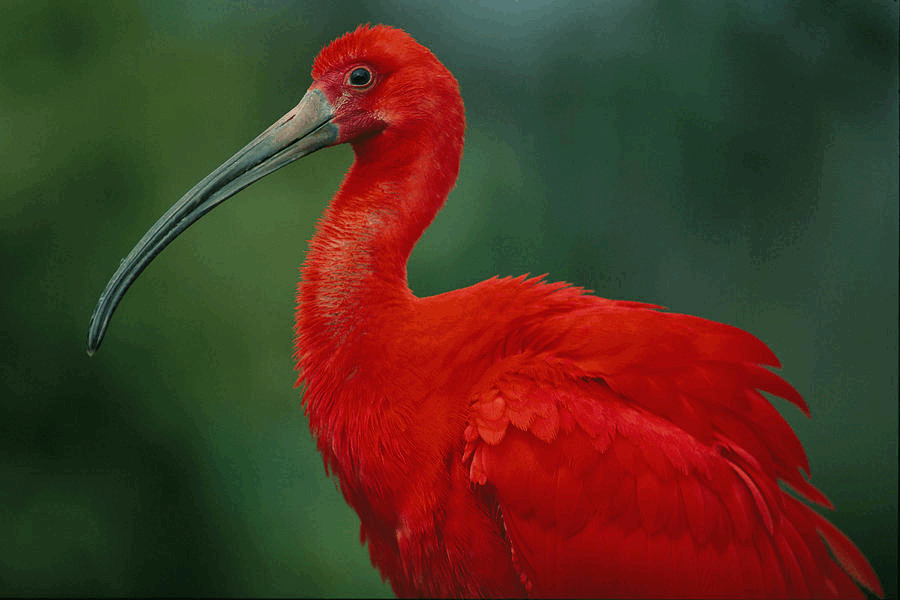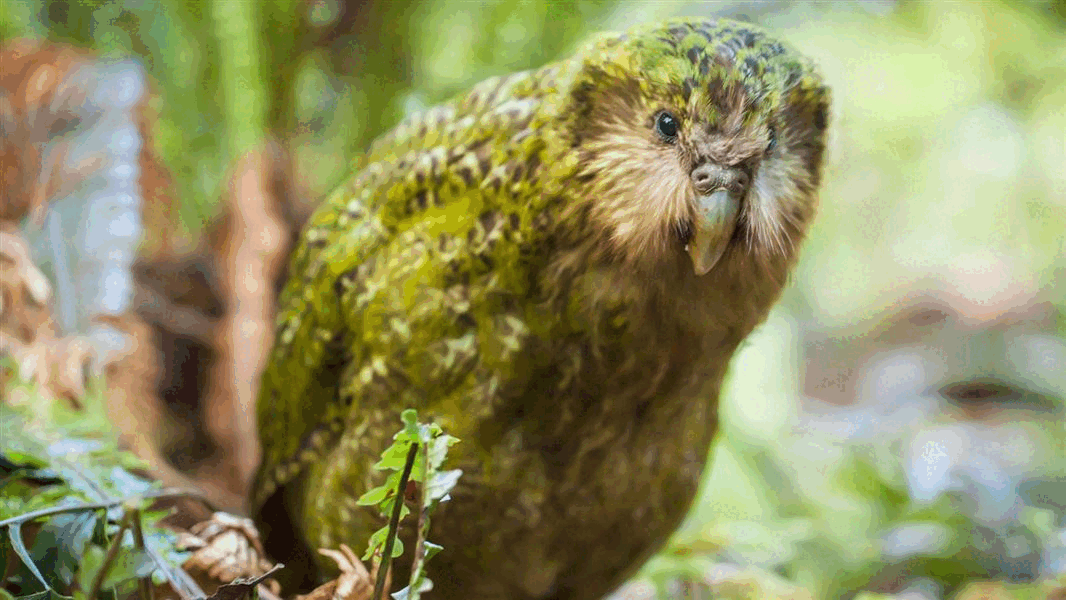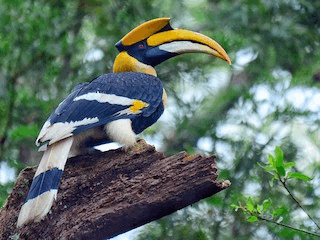
Macaw
The Macaw is a vibrant and colorful bird native to the tropical forests of Central and South America. The Macaw can live up to 50 years in the wild and even longer in captivity. These large parrots are highly social and live in large flocks, using their strong beaks to crack nuts and seeds. They are also known for their intelligence, problem-solving skills, and ability to mimic human speech.
Scientific Name: Ara macao
Wingspan: 40-45 inches
Habitat: Tropical Rainforest
Conservation Status: Endangered

Scarlet Ibis
The Scarlet Ibis is a stunning tropical bird renowned for its vibrant red plumage. Native to the wetlands and mangroves of South America, this bird is often seen wading in shallow waters, where it forages for food. Its bright color, which comes from the carotenoids in its diet, makes it one of the most striking birds in the tropical regions. The Scarlet Ibis has a long, slender bill adapted for hunting in mud and shallow water. It typically feeds on a diet of crustaceans, insects, and small fish. Despite its bright red appearance, the Scarlet Ibis is well-adapted to blending into its wetland habitat, providing it with both camouflage and protection.
Scientific Name: Eudocimus ruber
Wingspan: 40-45 inches
Habitat: Mangroves, Swamps, Wetlands
Conservation Status: Least Concern

Kakapo
The Kakapo, also known as the owl parrot, is a flightless parrot native to New Zealand. Distinguished by its large size, nocturnal habits, and distinctive green feathers with black and yellow markings, the Kakapo is a unique and critically endangered species. As one of the heaviest parrots in the world, it relies on its strong legs and claws to navigate its forested habitat rather than flying. The Kakapo has a distinctive, owl-like face with large, expressive eyes, enhancing its nocturnal vision. Its diet primarily consists of fruits, seeds, and flowers. The Kakapo's population has dwindled drastically due to habitat loss and predation by introduced species. Conservation efforts have been pivotal in increasing its numbers, but it remains critically endangered, with a small, carefully monitored population.
Scientific Name: Strigops habroptilus
Wingspan: 30-35 inches
Habitat: Subtropical Forests
Conservation Status: Critically Endangered

Great Hornbill
The Great Hornbill is a large bird found in the tropical and subtropical forests of Southeast Asia, including India, Thailand, Malaysia, and Indonesia. It is notable for its impressive casque on the beak, which can be up to 15 centimeters long. The wingspan of the Great Hornbill ranges from 150 to 152 centimeters. It primarily feeds on fruits, small animals, and insects. The species is classified as Near Threatened due to habitat loss and hunting pressures. Conservation efforts are in place to address these threats and protect their habitats.
Scientific Name: Buceros bicornis
Weight: 60-75 inches
Habitat: Tropical Rainforests
Conservation Status: Vulnerable